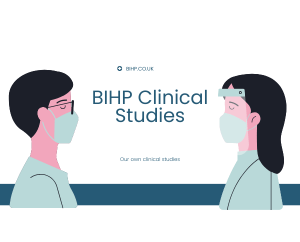New Cancer Treatment Breakthrough: Korean Scientists Reverse Cancer Cells to Normal
A Game-Changer in Oncology
A new cancer treatment could mark a turning point in the fight against one of the world’s most devastating diseases. Cancer has long been one of the most feared and deadly illnesses, with treatment strategies typically focused on eradicating malignant cells through surgery, chemotherapy, or radiation—often at the expense of the patient’s overall health. one of the most feared and deadly diseases on the planet. For decades, treatment strategies have focused on eradicating malignant cells through surgery, chemotherapy, or radiation—often at the expense of the patient’s overall health.
But now, a group of pioneering Korean scientists have made a groundbreaking discovery that could transform the field of oncology: a new cancer treatment that reverses cancer cells back to their normal, healthy state.
This revolutionary method could one day eliminate the need for aggressive therapies and significantly reduce harmful side effects, offering new hope to millions of patients worldwide.
Understanding the Science Behind the New Cancer Treatment
What Makes Cancer Cells So Dangerous?
Unlike healthy cells, cancerous cells do not obey the usual rules of growth and division. They multiply uncontrollably, resist cell death, and often invade other tissues. Current treatments focus on destroying these rogue cells—but that destruction often harms healthy cells as well.
The idea of reverting cancer cells back to their original, functional form has remained elusive—until now.
Reprogramming Malignant Cells: A Novel Cancer Treatment Strategy
Korean researchers have identified a crucial biological pathway that enables malignant cells to revert to their original, non-cancerous state. Their work focused on a process called epigenetic reprogramming—the ability to change gene expression without altering the DNA sequence itself.
By targeting specific proteins and genetic markers, they were able to deactivate harmful genes and restore healthy cell behaviour. This approach challenges the long-standing belief that cancerous cells are irreversibly damaged.
How the New Cancer Treatment Works in Practice
Targeting the Root Causes of Malignancy
The scientists concentrated on three key genetic mechanisms:
- Tumour Suppressor Genes: Reactivating these silenced genes helped restore control over cell growth.
- Transcription Factors: Adjusting these proteins altered how genes were expressed.
- Epigenetic Modifiers: By modifying chemical markers on DNA, they unlocked previously dormant tumour-suppressing functions.
Using CRISPR-Cas9 and other cutting-edge tools, the team successfully reset cancer cells to a healthy state in laboratory settings.
A Versatile New Cancer Treatment for Multiple Types
The results were consistent across multiple cancer forms, suggesting that this new cancer treatment could be widely applicable—not limited to a single type of tumour.
Cells that once grew aggressively began behaving like normal, functioning cells. This unprecedented result has generated excitement throughout the global medical community.
The Benefits of This Groundbreaking New Cancer Treatment
Safer Than Traditional Therapies
Traditional cancer treatments can be brutal. Chemotherapy, for instance, kills all fast-dividing cells—including healthy ones. The side effects are well known: fatigue, nausea, hair loss, and immune suppression.
This new cancer treatment offers a dramatically different approach. Instead of killing cells, it repairs them. That means potentially fewer side effects, a quicker recovery, and a higher quality of life during treatment.
Personalised Cancer Therapy Using Epigenetic Reversal
Another exciting aspect is the opportunity for personalised cancer care. Because every tumour is genetically unique, doctors could tailor reprogramming techniques to individual patients. This level of precision marks a major step forward in modern oncology.
Future Challenges and Opportunities for This New Cancer Treatment
Ensuring Long-Term Stability of Reversed Cells
While the lab results are promising, more research is needed to determine whether these reprogrammed cells remain stable over time. Scientists must confirm that the reversal is permanent and that cells won’t become cancerous again.
From Research to Reality: Clinical Trials and Delivery
Successfully delivering these molecular treatments to tumours in real patients remains a hurdle. Clinical trials will be essential to test both safety and effectiveness.
Approval from health authorities will also require extensive testing, but the early signs suggest that the future of this therapy is bright.
A New Era in Cancer Care Begins
This new cancer treatment could herald a major shift in how we understand and combat cancer. By focusing on cellular restoration instead of destruction, Korean scientists have opened a door to a more compassionate, less invasive form of therapy.
With further development, this breakthrough could reshape cancer care entirely—turning what was once a terminal diagnosis into a manageable and even reversible condition.
Final Thoughts on the Promise of New Cancer Treatments
This scientific milestone could redefine cancer treatment as we know it. Instead of fighting cancer with toxic weapons, we may soon be guiding diseased cells back to health using precision science.
The discovery by Korean researchers represents a beacon of hope in oncology—a sign that healing, not harm, could be the future of cancer care.
Related Articles:






